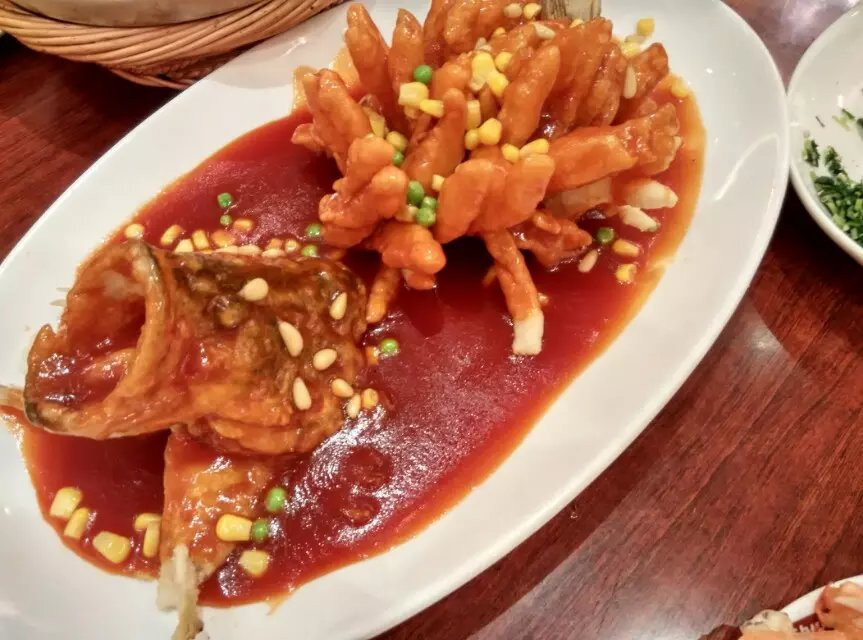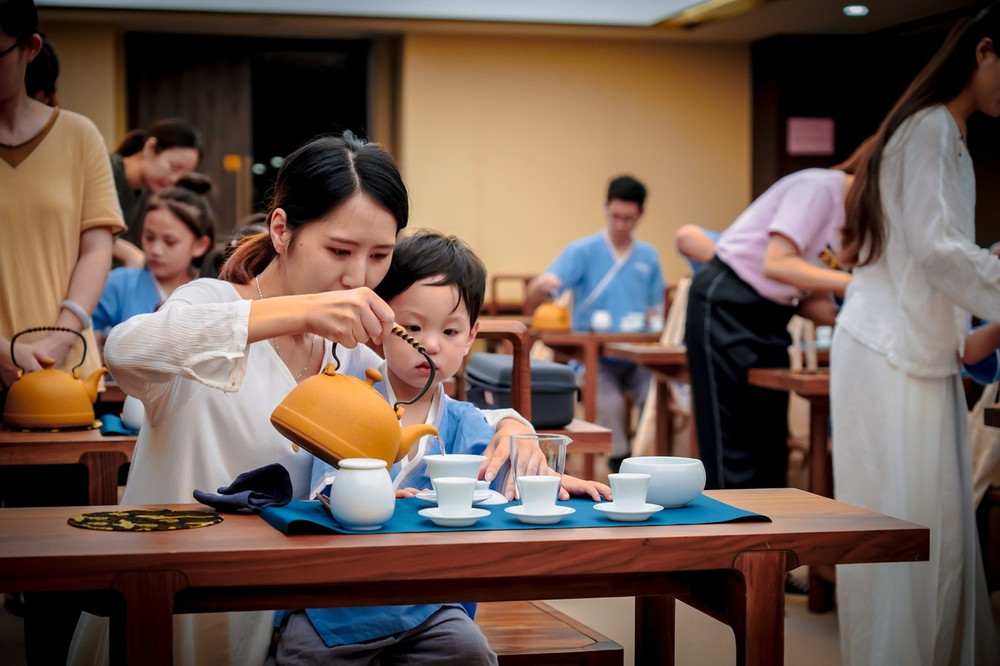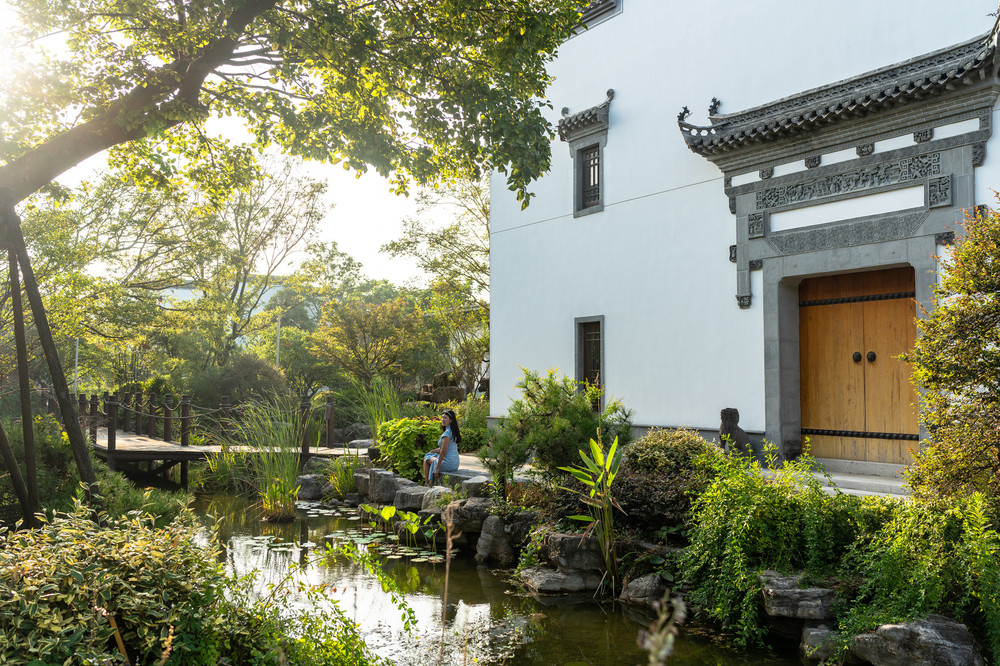**Traveling with Taste Buds: Exquisite Shanghai Cuisine and the Sweet and Sour Mandarin Fish**

—
### Duration: 4 Days
### Companion: Friends
### Activities: Culinary and Cultural Visits
### Visited: Nanxiang Ancient Town and Qibao Ancient Town
### Published on October 12, 2020, at 12:11 PM
**Introduction:**
Among the four fundamental elements of human life—’food, clothing, shelter, and transportation’—these stand out as drivers of human progress, evolving with the development of civilization. Today, ‘transportation’ has merged with travel, which is not just about experiencing the joy of various places but also about the profound taste experiences on one’s palate. The dishes encountered during the journey shake the history and culture, thus forming a narrative of culinary experiences. This series is titled: **”Traveling with Taste Buds”**.
**Location: Shanghai**
On April 22, 2015, I took the earliest flight (departing at 6:45 AM) to Shanghai, having breakfast at home at 3:30 AM, under the impression that breakfast would be available on the plane. Unexpectedly, on my first flight with Spring Airlines, I encountered a ‘Waterloo’. Firstly, during check-in, my suitcase that had been with me for over a decade was designated for check-in by Spring Airlines, despite not being overweight and meeting the airline’s specifications. I had to pay a 60 RMB baggage fee, as my ticket was a discounted one that did not include baggage fees. Secondly, there was no catering service on board; after asking the flight attendant for a glass of water out of extreme thirst…
**Nanxiang Ancient Town:**
After admiring the wisteria feast, I found it hard to find a place to eat nearby, unlike in Guangzhou where there are always restaurants around, ensuring one is never hungry. This made me realize that Shanghai people value dressing over dining. Thinking of the renowned Nanxiang soup dumplings, I knew I had to try them despite the long journey. So, I took the subway and a bus to Nanxiang Ancient Town, arriving at 3 PM. After being hungry for 12 hours, the Nanxiang soup dumplings I tasted were incredibly delicious. With each bite, the meat juice burst out, revealing a round meat filling. I devoured 10 dumplings in one go! Although they were quite expensive, costing 30 RMB for 20 dumplings.
Nanxiang soup dumplings, a traditional snack of the Han ethnic group, are a traditional delicacy from Nanxiang Town, Jiading, Shanghai, with a history of over 100 years. The dumpling skin is made from fine flour that is not fermented. Once steamed, the dumplings are exquisite, resembling a pagoda, with a translucent, crystal yellow skin. Each bite releases a burst of soup, filling the mouth with saliva, and the taste is exquisite. Nanxiang soup dumplings are famous for their thin skin, abundant filling, rich broth, and fresh taste, making them one of the most popular snacks among domestic and international customers.
**Dinner with Shanghai Friends:**
For dinner, our Shanghai friends treated us to a meal of local Shanghai cuisine at the imposing ‘Global Harbor’ (locally known as the tycoon harbor), a well-known local landmark. They said that since our visit was rushed and our stay brief, they wished to let us taste the most famous dishes of Shanghai in one meal, ordering a total of 8 dishes, both cold and hot! It was quite overwhelming. Fortunately, the dishes were exquisite, and although the plates were large, the portions were not excessive. I am very grateful for the warm hospitality of our Shanghai friends!
**Dishes and Their Descriptions:**
I sanitized each dish, but I could not name many of them. After returning, I shamelessly asked my Shanghai friends and learned about them.
1. **Stir-fried Kidney Flowers:** pork kidney, carrot, winter bamboo shoots, black fungus, salt, soy sauce, cooking wine, chicken essence, sesame oil, Sichuan pepper oil.
**Conclusion:**
Duration: 4 days. With whom: Friends. Way of playing: Food, humanities. The author visited these places: Nanxiang Ancient Town in Shanghai, Qibao Ancient Town. Published on October 12, 2020, 12:11. **”Taste Charm on the Journey with Taste Buds”** – Exquisite Shanghai Cuisine, Favorite Sweet and Sour Mandarin Fish.
This journey was not just about the places visited but also about the flavors experienced, making it a memorable culinary adventure.First, when handling the check-in procedures, that suitcase that had followed me for more than ten years was designated by Spring Airlines to be checked in without being overweight and meeting the airline’s specifications. Moreover, I had to pay 60 yuan for the checked baggage fee. The reason is that I bought a special ticket that does not include baggage checked fee.
Second, no catering is provided on the plane. When I was extremely thirsty, I asked the flight attendant for a glass of water. After enjoying the wisteria feast hungrily, I couldn’t find a place to eat nearby. Unlike in Guangzhou where there are restaurants everywhere and one will never be hungry at any time. Only then did I realize that Shanghainese pay attention to clothing but not food.
Thinking of the long-famous Nanxiang Xiaolongbao, I always have to taste it after flying a long distance. So I took the subway and bus to Nanxiang Ancient Town. By then, it was already three o’clock in the afternoon. After being hungry for 12 hours, the Nanxiang Xiaolongbao I ate was extremely delicious. Taking a bite, the meat juice squirted out. Inside was a round meat filling. I ate 10 in one go! However, the price is not cheap. Twenty small buns cost 30 yuan. Nanxiang Xiaolongbao, a Han ethnic snack, is a traditional famous snack in Nanxiang Town, Jiading District, Shanghai. It has a history of more than 100 years. The skin of Xiaolongbao is made of unfermented refined flour. After being steamed, the Xiaolongbao is small and exquisite, shaped like a pagoda. The skin is transparent and crystal clear yellow. With one bite, there is a mouthful of soup, making the mouth water. Nanxiang Xiaolongbao is famous for its thin skin, many fillings, heavy marinade, and delicious taste. It is one of the popular local snacks welcomed by customers at home and abroad.
For dinner, a friend in Shanghai invited us to eat Shanghai local cuisine in the very imposing, palace-like building, the very famous ‘Global Harbor’ (locals call it Tuhao Harbor). They said that our time here is rather hasty and our stay is short. They wished to let us taste the most famous dishes of Shanghai in just one meal. They ordered a total of eight cold and hot dishes! It startled me. Fortunately, Shanghai cuisine is exquisite. The plates are large but the portions are not much. I am very grateful for the warm hospitality of my friends in Shanghai! I took pictures of every dish for ‘disinfection’. However, I couldn’t name many of the specific dishes. After returning, I unabashedly asked my friends in Shanghai and then I knew what they were.
1. Stir-fried Pork Kidney: Ingredients include pork kidney, carrot, winter bamboo shoot, black fungus, salt, soy sauce, cooking wine, chicken essence, sesame oil, and pepper oil. The pork kidney is crisp, tender, and delicious. The taste is spicy and fresh, refreshing and fragrant. It is especially delicious when eaten hot.
2. Four Delights Gluten: There are many ingredients, including gluten, dried mushrooms, day lily, black fungus, peanuts, soy sauce, salt, sugar, and sesame oil. With an attractive color and mellow taste, it is a typical Shanghai sweet and salty flavor. All the materials fully absorb the taste of the soup, and the wonderful taste is indescribable.
3. Shanghai Poached Chicken in Plain Broth: It uses three-yellow chicken. The taste is not as good as Guangzhou’s white cut chicken. I feel that chickens in Guangdong are extremely delicious. Cantonese white cut chicken and Hakka salt-baked chicken. The former is original in taste, and the latter has a salty and fragrant aftertaste. When in other places, don’t eat chicken. For example, Hangzhou’s beggar’s chicken and Dezhou braised chicken are not as good as white cut chicken.
4. Stir-fried Shredded Eel with Garlic: Ingredients include eel, garlic, lard, sugar, dark soy sauce, light soy sauce, minced ginger, scallions, sesame oil, white pepper powder, starch, and yellow rice wine. A typical Shanghai dish with a smooth and tender taste and a unique garlic and pepper fragrance.
5. Garlic Shrimp: Ingredients are prawns, minced garlic, salt, and corn oil. With a strong garlic fragrance and the freshness of prawns, even the shrimp shells can be eaten.
6. Stir-fried Cauliflower: It seems to have added shrimp paste and is very crispy.
7. Old Alley Wok Dish (Egg Dumpling Casserole). As soon as this dish came up, I found it strange. This is clearly our Hakka egg dumpling casserole. How did it become the old alley### Sweet and Sour Mandarin Fish: A Culinary Masterpiece
**A Delectable Experience:**
After adjusting the taste, it is extremely delicious after coming out of the pot. (Unfortunately, I didn’t take a picture at that time). The dish, Sweet and Sour Mandarin Fish, surprises people as soon as it appears. It can be called a work of art, with its knife work, shape, and cooking method that make it probably impossible to replicate at home. The first bite is crispy, melting in the mouth, followed by a sweet and sour taste that lingers.
**Cultural Significance:**
‘Sweet and Sour Mandarin Fish’ is a traditional famous dish of the Han nationality in the Suzhou area, Jiangsu Province, belonging to Jiangsu cuisine. It has a history of more than two hundred years since its creation. In the Jiangnan region, this dish has always been considered a delicacy for banquets, typically prepared through steaming or braising methods. The creation of the squirrel-shaped mandarin fish dish originated in the Suzhou area.
**Historical Background:**
It is said that during the Qing Dynasty, Emperor Qianlong, while touring the south, visited the Songhe Lou restaurant in Suzhou in disguise. The chef, using carp meat, removed the bones, carved patterns into the fish, seasoned it slightly, coated it with egg yolk batter, and then deep-fried it until tender. A hot sweet and sour sauce was poured over it, resulting in a dish resembling a squirrel with a crispy exterior and tender interior, delightfully sweet and sour. The Qing Dynasty’s ‘Tiao Ding Ji’ records: ‘Squirrel Fish, take the belly of the (fish season) fish, remove bones, coat with egg yolk, fry until yellow, and cook in oil and sauce to achieve a squirrel-like style.’
**Health Benefits:**
Squirrel Mandarin Fish is known for its health benefits, such as nourishing the kidneys and spleen, and promoting blood circulation and removing blood stasis. It is a favorite dish!
### Exploring Qibao Ancient Town: A Culinary Adventure
**Breakfast in Qibao:**
On the second day, I visited Qibao Ancient Town and enjoyed a breakfast there. Authentic Shanghai Tangyuan, each one enormous, with various fillings such as fresh meat, red bean paste, and date paste, all at a price of 3 yuan each. Soft and smooth, with a bite, the filling overflows, slowly melting in your mouth. I had one of each with fresh meat, sesame, and date paste fillings, which already exceeded my capacity.
**Wonton Soup and More:**
The fresh meat wonton soup costs 6 yuan per bowl, with thin skin and generous filling, offering a smooth and refreshing taste, and a long-lasting fragrance. Additionally, there is fermented rice wine with small balls for 10 yuan per bowl, and poached egg noodles for 7 yuan.
**Cuisine and Culture:**
Shanghai cuisine, like the delicate Shanghai women, is coy yet refined. If there is a disagreement, she will not argue but will be coy until you concede, leaving a sweet feeling in your heart. This coquetry softens a man’s heart, so Shanghai women are often not involved in mundane chores, living a very happy life. It can be described as a land of beautiful mountains and waters, with gentle and graceful ladies.









